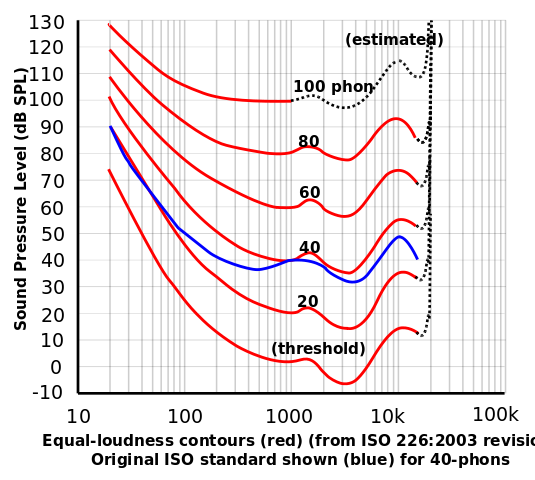Audio excursion
The last couple of months I’ve had a relapse of my audiophilia, which had laid dormant for years.
I got a subwoofer, which I had read was one of the biggest improvements one could make to (most) home hi-fi systems. That turned out to be quite the rabbit hole. Low frequencies are very challenging to get right in domestic audio. All because of physics.
Once you shop around you start to realize that subwoofers are power-hungry.
While an 80 watt-per-channel stereo amplifier is perfectly respectable,
subwoofers will generally sport at least a 150 watt amplifier.1 You often
find 300 watt amps, and quite a few subs that are well regarded and quite
affordable will have 600 watts and up.
You also see recommendations to get at least two subwoofers.
What gives? Are all these things meant to blow your ears off in movie special effects? Well, no. It’s all part of the Low Frequency conundrum.
Is it worth it?
How important are the lower frequencies?
Well, that’s subject to opinion, but there’s plenty of low frequency content in
music and movies. Being able to play it loud enough without distortion makes a
real difference.
Check out the Musical acoustics post on Wikipedia for the frequency range of instruments. The Harmonic article has some very interesting animations of sound waves.
Power requirements
Human hearing has different sensitivity to different audio frequencies. We are most sensitive to the frequencies present in speech, from 300 hertz (Hz) to 3 KHz, i.e. mid-range. Low frequencies require a lot more power than mid-range frequencies to achieve the same perceived loudness.
This curve shows equal-loudness contours, against sound frequencies (x-axis):

equal loudness contours By Lindosland, Public Domain,
Have a look at the 60 phon line, which in the midrange requires 60 dB SPL (Sound
Pressure Level). 60 phon perceived loudness is … moderate-low level. To achieve
this perceived loudness, at 50Hz you need 90 db SPL.
Note that the dB (decibel) is a logarithmic measure. An increase of 10dB means a
10x factor. So, to achieve a 60 phon perception at 50Hz, you need 30dB more than
for midrange frequencies. 30dB translates to 1000 times more power.
Not only will you see higher wattage on amps meant for low frequencies, but the speaker drivers need to be larger. To get those high SPL’s, drivers need to push a lot of air. Drivers with a large surface area can displace the same air volume with smaller movement. Smaller movement helps reduce distortion. It’s common for subwoofers to have drivers with diameters from 10" or 12" (25 - 30cm) upwards.
Room modes and equalization
To add another hurdle, rooms have an outsize influence on the reproduction of low frequencies. Rooms generate reflected sound waves and interference patterns in all the audio spectrum (which is 20Hz - 20KHz,) but when the wave-length of sound waves is similar to room dimensions, the reflections become particularly onerous.
Waves trapped in a walled enclosure will result in reflections, and in resonance and modes. Some frequencies will get muted by the room because of destructive interference, others will get boosted. In high frequencies there are a lot of room modes, and human hearing can “listen through” the interference.
In low frequencies, when the wavelength of the waves is comparable to room dimensions, we get few discrete modes, which will wreak havoc on frequency response from all loudspeakers, no matter how perfect or expensive.
What can one do? This is room-dependent, and it all begins with measuring the room acoustics, and applying equalization (EQ) to counteract the room modes. Placement of speakers (drivers) can also help. Judicious placement can help tame particularly harmful modes. If available, 2 or 4 subs can be placed in such a way that modes are reduced. But again, all this is highly room-dependent. You should not do it before measuring your room acoustics.
Learning and measuring
I bought my first subwoofer without knowing all the above information. After integrating the sub and doing listening tests, I noticed there was an occasional boominess in some tracks.
I started to look around for information, and came upon the audio forum/community Audio Science Review. What a treasure trove of information and expert members. It has been an education.
There’s a thread there on getting started with measuring your room acoustics. It can be done cheaply, and the potential benefits are huge: ASR: Room Measurement Tutorial for Dummies.
To quote from the thread:
There are few more things transformative in audio than learning how room acoustics work. You never look at any system the same again.
Motivated by this thread and others at ASR, I bought a cheap calibrated microphone and started taking measurements with Room EQ Wizard (aka REW).
To my surprise, the boominess I had noticed was produced mainly by my right speaker, not the sub. Below you can see my stereo speakers’s frequency response (FR.) Note the powerful room mode at 39Hz. Also note how chopped-up the FR is below 300Hz.

my stereo speakers’s Frequency Response
Doing lots of readings and frequency sweeps, I realized the acoustics of my room would work much better if I reoriented my hi-fi set and main listening sofa. Which I did. Further tests convinced me that I should get a second subwoofer to reduce some powerful room modes. Now I have a symmetric configuration of two subwoofers, and have been enjoying the improved sound of my movies and music. It seems I am done, for the time being.
Oh, what one ends up doing because of one’s obsessions…
-
active subwoofers, i.e. subwoofers that have an amplifier incorporated, are generally what is meant by subwoofers. ↩︎